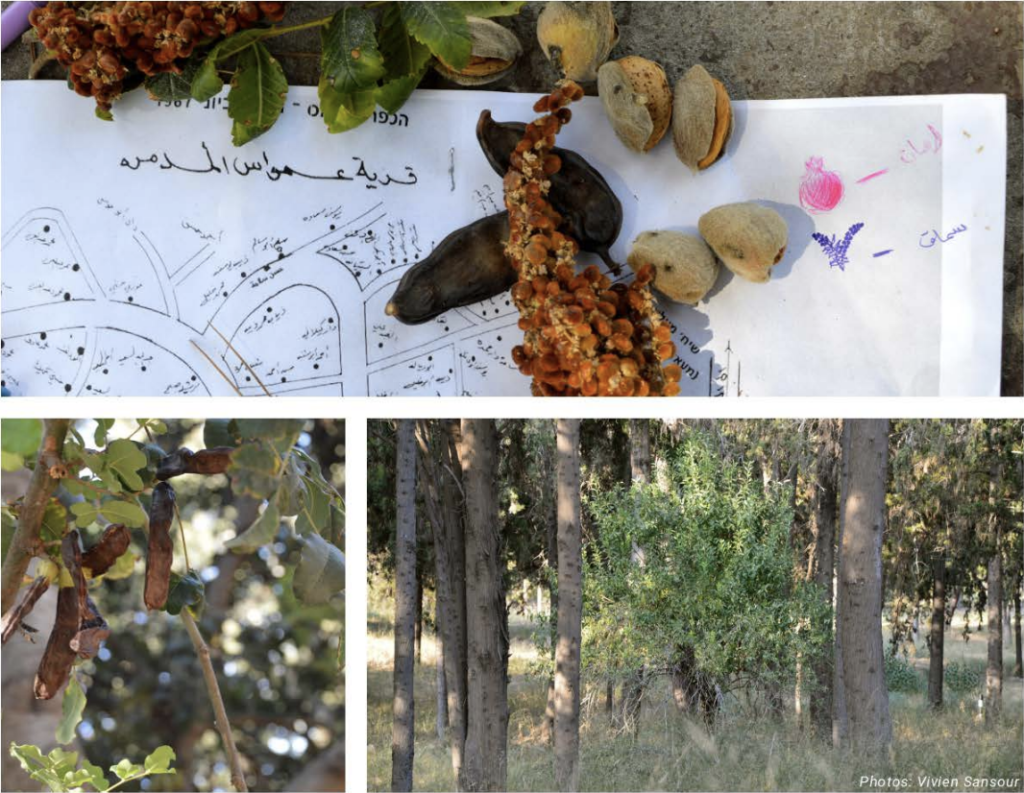Dancing on the Edge brings forward this text to you by Vivien Sansour from the publication A few things we learned about Art, Ecology & The Commons by Temporary Art Platform (TAP), Beirut.
During the third moment of the year of listening, titled Listening to Seeds, Dancing on the Edge has collaborated with TAP, and Nour Osseiran, one of the curators of TAP read this text during the Reading Room.
Art, Ecology and the Commons took place between August 27 and September 5, 2021 in Beirut, yet its pertinence and necessity continue to resonate in the unrelenting volatility of our current situation.
An agonizing community came together to seek refuge in the foliage of our young urban forest, protected by the shade of its trees, equally as inspired by their interdependence and resilience despite a broken environment along the bank of a waterless river. For ten days, we gathered for walks, talks, films, meals, planting and care, breathing life into our forest and the minds of those who joined us, citizens and artists alike. Inspired by our reading of The Undercommons by Stefano Harney and Fred Moten, it is what we have been calling a collective Study.
Art, Ecology and the Commons’ program sought to harness the forest’s togetherness and collective practice to inspire new methodologies. In a time of extreme crisis, it brought to light people’s overwhelming engagement and desire for resistance. This, however, was a not singular pursuit, conceived in search of resolution. It was instead designed to build curiosity and open-ended inquiry, prompting the unexpected and emergent to manifest, in the hope of affecting long-term change.
This digital publication embraces an experimental format of spontaneous gathering, and furthers the curatorial methodology of the Study. Multiple voices, contexts, and perspectives are juxtaposed, different forms of narratives featured, and various knowledges woven together. What does a small urban afforestation site neighboring a highroad in Lebanon have in common with the threatened rainforest of Amazon? Jumping between local and international scales, the transborder character of Art, Ecology, and the Commons unfolds throughout the publication.
This e-publication stems as much from the research references, conversations, and sister initiatives having guided us through theproject, as from the takeaways, propositions, and new questionings prompted by artists, participants and community members we engaged with during the program in August 2021.
Can relating our own bodies to growing shrubs foster greater empathy and care? Can looking at forests’ complex modes of organizations inspire us greater solidarity? If a polluted river makes us realize the suffering we cause and endure, a traveling seed can whisper its own tale to make us hope, and cope.
As such A Few Things we Learned about Art, Ecology, and the Commons plants the seeds for urgent reflections on our ecological relations and modes of collaboration.
Approach this editorial compilation as a curated playlist: play, scroll, skip, pause, replay, and find those recurring motifs intertwined throughout its five chapters, following the threads of mycelial networks.
Ethno Botanics By Vivien Sansour Page 142-146 Reading Link
Photo by: Vivien Sansour
